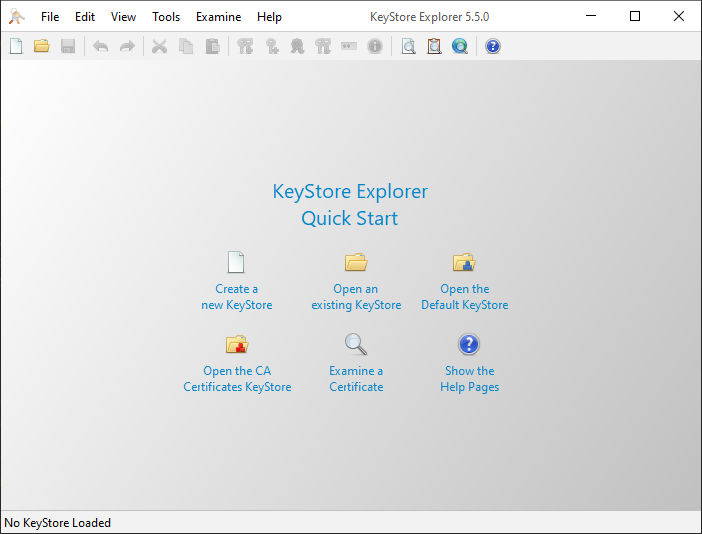

- #KEYSTORE EXPLORER CHANGE ENTRY NAME INSTALL#
- #KEYSTORE EXPLORER CHANGE ENTRY NAME PROFESSIONAL#
- #KEYSTORE EXPLORER CHANGE ENTRY NAME WINDOWS#
I create a shortcut and change the Icon to one I created for this purpose.Ĥ. For this demo I used C:\ProgramData\Ubiquiti UniFi.ģ. You can even create your own root folder if you don’t want any admin permission to be needed for the folder. That could be C:\Program Files or C:\ProgramData. To move the UniFi controller app you copy the entire folder to the desired location. It will put the installation under C:\Users\USERNAME\Ubiquiti UniFiĢ.

#KEYSTORE EXPLORER CHANGE ENTRY NAME INSTALL#
Install the controller with the UniFi-installer.exe installer.
#KEYSTORE EXPLORER CHANGE ENTRY NAME WINDOWS#
If you don’t need that, Windows Core will do. You don’t need a browser on the virtual machine per se, but it acts as a console access to the controller via the VM in case of network issues.

The controller runs on Java so that’s a no brainer you need it. Chrome & Firefox are support, others may be as well or just work. Multiple people need to manage systems so having it tied to an individual isn’t that great.įor a UniFi install is first install java (圆4) and a 圆4 bit browser. But people leave and profiles get deleted. Installationįor some reason the installer dumps all the files in the user profile of the person running the installer.
#KEYSTORE EXPLORER CHANGE ENTRY NAME PROFESSIONAL#
A Cloud Key appliance or Raspberry PI was less interesting in this environment that had professional racks in available in dedicated server & network rooms. By the time the solution is deployed that will have become generally available. As they have a modern Hyper-V environment we opted to deploy the controller on a Windows 2019 virtual machine. The controller had to be implemented on-premises (self-managed, not via a service provider). Apart from the WAPs all gear goes into server & network racks. We selected Ubiquiti equipment to comply with the requirements. It needed to offer both corporate (Radius Server) and guest Wi-Fi access for modern workplace needs. I recently had to prepare replacing an aging Aruba Wi-FI deployment with an effective, more capable and budget friendly solution.


 0 kommentar(er)
0 kommentar(er)
